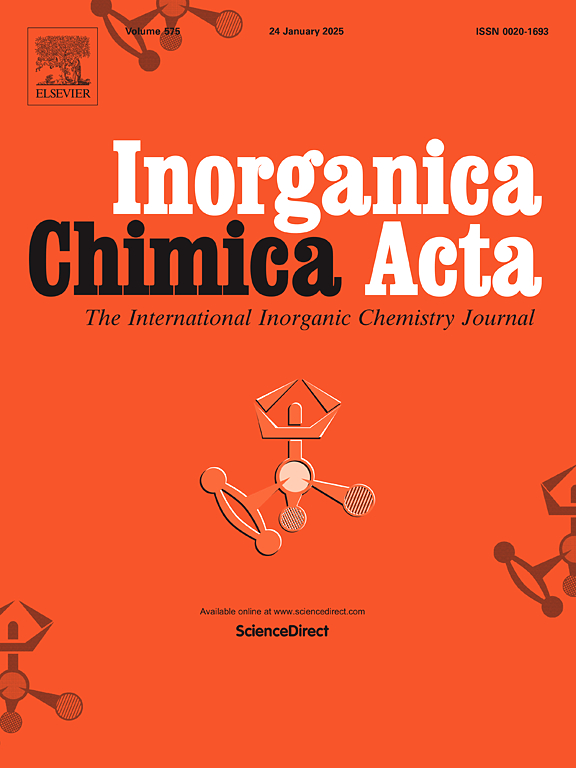Au(I) complexes bearing allyldiphenylphosphine and thiolate ligands: Synthesis, structural characterization, and biological evaluation
IF 2.7
3区 化学
Q2 CHEMISTRY, INORGANIC & NUCLEAR
引用次数: 0
Abstract
This study presents the synthesis of gold(I) thiolate complexes, [Au(SR)(PPh2allyl)], PPh2allyl refers to allyldiphenylphosphine, and SR represents the deprotonated forms of various thiols, including pyridine-2-thiol (HSpy, 1a), pyrimidine-2-thiol (HSpyN, 1b), benzothiazole-2-thiol (HSbt, 1c), and benzimidazole-2-thiol (Sbi, 1d). The complexes were prepared via nucleophilic substitution reactions between chlorogold complex [AuCl(PPh2allyl)], A, and in situ generated thiolate salts under inert conditions. Characterization was performed using NMR spectroscopy and HR ESI-Mass, while single-crystal X-ray diffraction provided structural confirmation for A and 1b. The anticancer activity of these gold complexes was assessed in three human cancer cell lines: lung (A549), ovarian (SKOV3), and breast (MCF-7), alongside a non-cancerous breast cell line (MCF-10 A). The results revealed promising antitumor effects, with 1a and 1b demonstrating superior selectivity and potency compared to standard treatments such as cisplatin and auranofin. These compounds demonstrated a good selectivity index. Further investigations indicated that 1b induces 77.0 % apoptosis in a dose-dependent manner, suggesting its potential as a therapeutic agent. Additionally, 1b's effects on cell cycle progression were observed, with higher concentrations promoting S phase entry, which may influence cell viability. Although genotoxicity was noted, the primary mechanism of action for 1b appears to be the induction of apoptosis rather than direct DNA interaction. Correlating cytotoxicity data with molecular docking results revealed a trend where compounds with stronger binding affinities to DNA and thioredoxin reductase (TrxR), particularly 1b and 1d, exhibited lower IC50 values. Mechanistic insights were refined by acknowledging the dynamic reactivity of these complexes with TrxR's selenocysteine, suggesting that docking results represent initial binding prior to potential ligand exchange. Although some genotoxicity was observed, the primary mechanism appears to be TrxR-mediated apoptosis rather than direct DNA targeting, consistent with broader literature emphasizing protein interactions over nucleic acid effects. These findings underscore the therapeutic potential of these gold complexes in targeting cancer cells, highlighting their promise as selective anticancer agents.

求助全文
约1分钟内获得全文
求助全文
来源期刊

Inorganica Chimica Acta
化学-无机化学与核化学
CiteScore
6.00
自引率
3.60%
发文量
440
审稿时长
35 days
期刊介绍:
Inorganica Chimica Acta is an established international forum for all aspects of advanced Inorganic Chemistry. Original papers of high scientific level and interest are published in the form of Articles and Reviews.
Topics covered include:
• chemistry of the main group elements and the d- and f-block metals, including the synthesis, characterization and reactivity of coordination, organometallic, biomimetic, supramolecular coordination compounds, including associated computational studies;
• synthesis, physico-chemical properties, applications of molecule-based nano-scaled clusters and nanomaterials designed using the principles of coordination chemistry, as well as coordination polymers (CPs), metal-organic frameworks (MOFs), metal-organic polyhedra (MPOs);
• reaction mechanisms and physico-chemical investigations computational studies of metalloenzymes and their models;
• applications of inorganic compounds, metallodrugs and molecule-based materials.
Papers composed primarily of structural reports will typically not be considered for publication.
 求助内容:
求助内容: 应助结果提醒方式:
应助结果提醒方式:


